Good Reading for Children

Longtime Great Connections supporter John Davis from the Dallas area, recently asked me for a list of great books for children. And I’m glad he did because children’s books today can be a horror show. If we advocates of reason, individualism, and freedom are ever going to conquer the culture and reclaim the freedoms our country once had, we need to trumpet the glory of hard work, adventure, courage, integrity, and self-reliant individualism.
Where better place for us to start than with great fiction for the young? As a gift for the New Year to our supporters, I’ve compiled many suggestions as to where to find great reading for children. I’d love to hear what you’ve found!
Modern Esthetics and Children’s Literature, The Problem
Before I go into my reading suggestions, I wanted to make some comments about what’s going on in children’s literature today that particularly motivated John to ask me for suggestions and motivates me to write this post.
A recent article by Dave Seminara in The Wall Street Journal catalogues the leftist dogma that reigns in the children’s book section these days: Reading From Left To Left at Barnes And Noble. Even worse, in my opinion, are the books that feature an unrelenting parade of “realism” with drunken mothers, molesting fathers, and teens that cut themselves to relieve their psychological pain. No heroes, adventure, or greatness in sight. Meg Gurdon outlined this trend in “The Case for Good Taste In Children’s Books,” WSJ, back in 2011.
The idea with these so-called “realistic” stories is that they allow children in horrific situations to see that they’re not alone and to teach other children about what can go on. The first presumably makes the readers feel better about their situation, the latter teaches those readers to empathize with others who are less fortunate.
But what’s missed is the child’s deep need to see examples of courage, pluck, creativity, and the achievement of greatness. As Virginia Postrel says in The Power of Glamour, one wants to see that life can be wonderful. Children, whether they are in terrible situations or not, need an inspired vision of life to help them craft their future and to fortify them against adversity.
I know these were very important to me—how about you?
What’s a parent to do? A parent’s problem is not simply trudging through piles of dreck to find any good contemporary books, it’s that one doesn’t hear about many of the best older books. They are widely ignored today, partly because they are eschewed for ideological reasons and partly because the younger generation of teachers simply doesn’t know about them.
The collectivists, Post Modernists in particular, did a real head-job on so many young people including teachers, and they did it starting in grade school. They did it with Weekly Reader and with the kinds of fiction stories they taught.
At first, I was going to recommend the Junior Great Books series, but when I look at what they have, I don’t like it! It includes too many questionable volumes, catering to the dogma of the day. The list doesn’t get to real classics until about grade 10—take a look at the catalog, you’ll see what I mean.
And I do NOT recommend the Newberry and Caldecott winners these days as sure reads, the committee has obviously been influenced by modern esthetics, giving awards to those “realistic” volumes I mentioned above.
The Soul of the Child
What the child needs are inspiring books, books that show how to live a wonderful life, books of adventure that show interesting, different, and competent children in many situations, whether they’re classic exploration-and-danger stories, or exploration-and-development-of-relationships. Best, of course, are books that integrate both.
Another mark of a good children’s book is one that addresses the concerns of the child, such as how to behave in order to successfully navigate relationships with siblings, friends, parents, employers, acquaintances, and strangers. These are some of my considerations. To start, here’s a decent list from Wikipedia, and the New York Public Library’s list has a lot of good titles. Goodreads has a wonderful list of novels from which to learn history (my favorite way to learn history! After I read an historical novel, I’m motivated to read up on the facts of the events).
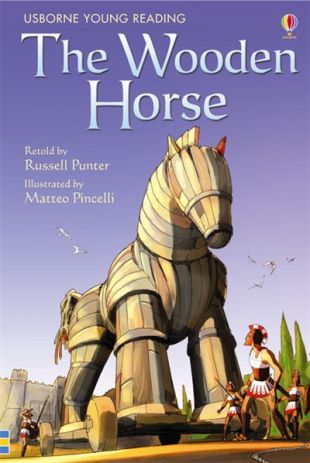
Speaking of history, we all know what the illustration above represents! Children’s versions of the Greek myths are excellent, as stories, and to insure that your children have a grounding in the ideas and vision that are at the foundation of our civilization. This blog has a good list. The Greek myths in particular had a striking effect on me: I loved their vision of proud human-like gods and goddesses. They were riveting examples of self-assertive nobility, achievement, and adventure—as well as foibles and mistakes. But their virtues loomed largest in my child’s mind and I’ve carried them with me to this day.
From Puppies to Robots
For the youngest, the Golden Books, a very old series, has wonderful reads for that age. These include such classics as The Poky Little Puppy and Tootle.
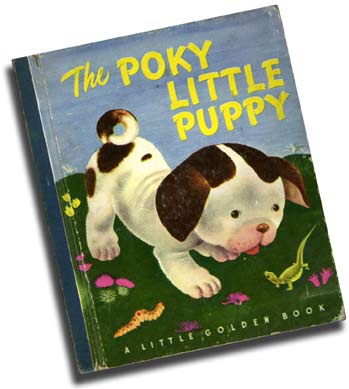
This collection includes Disney stories: you may or may not know that the older Disney stories such as Dumbo and Peter Pan are now being attacked as racist and sexist!
If you want books to read to children a bit older, many know of the Little House On The Prairie series by Laura Ingalls Wilder which are, of course, outstanding. They paint a vivid picture of life on the American frontier, and strongly illustrate the individualist values of self-reliance, hard-word, and perseverance in the context of a loving family.
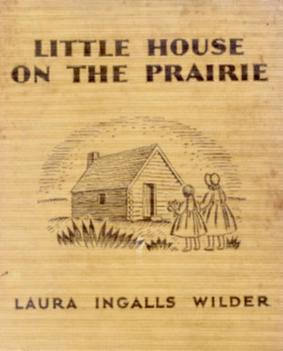
First edition cover.
But someone even earlier are the books of Horatio Alger. He was a supremely influential author in the mid-to-late 19th century who is remembered today mostly in contemptuous tones, as presenting a fantasy of how great it is under laissez-faire capitalism.
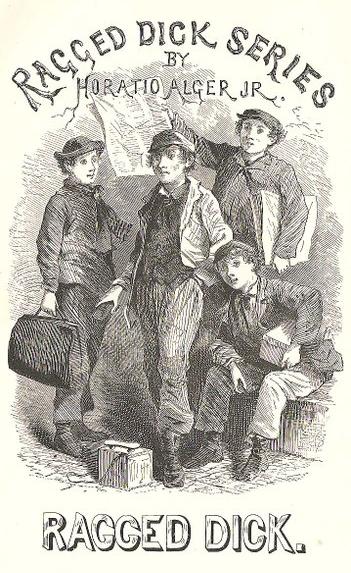
In fact, his books inspired generations of boys living on the streets by their wits. His stories dramatized how orphaned boys, living hand-to-mouth, could boot strap themselves into a better life in the 19th century laissez-faire society (a notable picture of what life was like for today’s well-cushioned children).
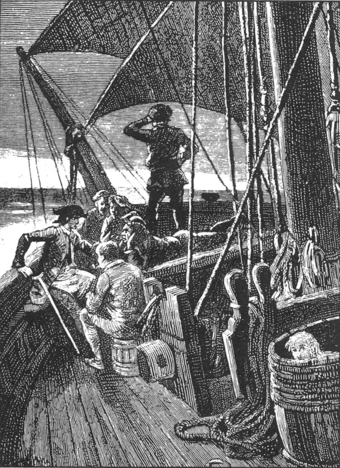
From Treasure Island
Robert Louis Stevenson’s works of adventures, such as Treasure Island and Kidnapped inspired generations too. But he was seen for much of the 20th century as a second-class writer. This commentary gives you an idea of what happened: “He became relegated to children’s literature and horror genres,[75] condemned by literary figures such as Virginia Woolf (daughter of his early mentor Leslie Stephen) and her husband Leonard Woolf, and he was gradually excluded from the canon of literature taught in schools.[75] His exclusion reached its nadir in the 1973 2,000-page Oxford Anthology of English Literature where he was entirely unmentioned, and The Norton Anthology of English Literature excluded him from 1968 to 2000 (1st–7th editions), including him only in the 8th edition (2006).[75]”
Ironically, “He was a literary celebrity during his lifetime, and now ranks as the 26th most translated author in the world.[1]” I guess the world has poor taste according to the literary lights!
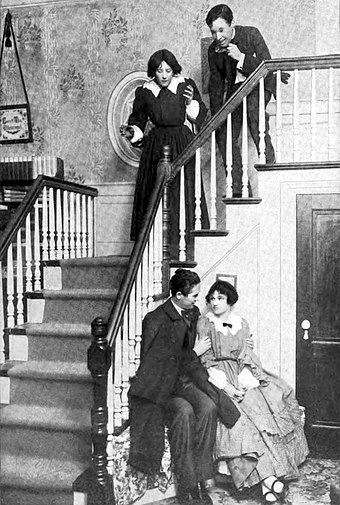
From a Broadway production of Little Women
Of course,
Louisa May Alcott’s Little Women series was
a staple of my reading. It has many elements of 19th century Christianity, but
brought a new vision of the assertive young woman to 19th century American
culture. “Elbert argued that within Little
Women can be found the first vision of the “All-American girl”
and that her multiple aspects are embodied in the differing March sisters.[7]:199. And
it does a great job of dramatizing what life was like in 19th century America.
There are many simplified versions of classic novels, such as Alexander Dumas’ The Three Musketeers or The Count of Monte Cristo and
Hugo’s Les Miserable
and Notre Dame de Paris.
In fact many classic adult stories are available for children, such as those of
Homer, William Shakespeare, Mary Shelley, Victor Hugo, and Mark Twain.
But a bit older children are capable of reading those themselves, with adult help. You only need to see the achievements of educator Marva Collins to know that. She taught Shakespeare to lower elementary students, guiding them to see the meaning and implications of his stories and their characters. The Marva Collins Story movie shows how she used the values of hard work, self-respect, and individualism to encourage students from one of Chicago’s roughest neighborhoods to pull themselves up and succeed in life. She trumpeted capitalism with many examples of how people made something of themselves.
She’s a great role model!
Some people might appreciate this list of famous English novels that have been shortened and simplified to make them more accessible. They are free ebooks.
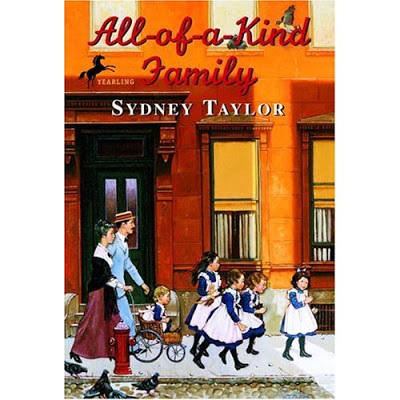
I read and thoroughly enjoyed Sydney Taylor’s All of A Kind Family series as a child. It gave me a vivid picture of Jewish family life in early 19th century New York City. And, as so many of the other books of this era, I got the implicit dose of self-reliant individualism and hard work.

Five Little Peppers
Another series I enjoyed was Five Little Peppers by Margaret Sidney. Through delightful story-telling, Sidney emphasizes the values of hard work and individualism—the children learn to appreciate and befriend people regardless of background, if they have something of value to offer.
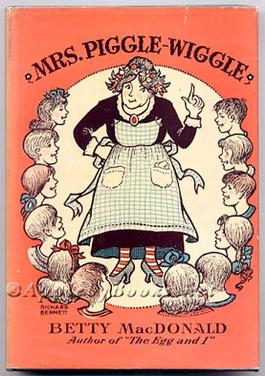
And, then there’s the Mrs. Piggle Wiggle stories by Betty MacDonald, highly amusing fantasies in which an apparently daffy old woman provides unusual cures for parents’ problems with their children! The best part about the cures is that they often depend on the natural consequences of the child’s behavior. For example, she plants seeds in a child’s dirty ears and grows carrots! They make children see the reasons for many adult rules.
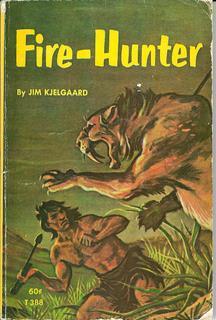
Jim Kjelgaard is most famous for his novel, Big Red, which was made into a movie. I didn’t read him as a child but as an adult and I found Fire-Hunter an engrossing imagining of how humans transitioned to a higher form of living than mere wandering. In it, he dramatizes how an exceptional pre-historic human could have conquered fire, found good shelter and safety, and even brought dogs into human life! He was a best-selling novelist for boys in particular, illustrating adventure, independence, creativity, and courage. Many are available online for free if you want to take a look before buying. Here’s an article about him and the books, and I saw many on sale. Thanks to architect John Gills for recommending him to me.

And I can’t forget to mention the inimitable Robert Heinlein, whose influence is vastly beyond science fiction. You may know him as author of The Moon Is A Harsh Mistress or Starship Troopers. His stories are rife with the individualist who bucks the system, the courageous loner who fights for independence.
Well, he had an entire series of books for young people! Have Spacesuit: Will Travel and Tunnel In the Sky are two examples. One author says of the latter “It seems obvious that Tunnel in the Sky is a direct response to William Golding’s Lord of the Flies (1954). Indeed, I imagine Heinlein putting down Golding’s book and heading straight for the typewriter grinding his teeth and muttering ‘Revert to savagery my ass!’…Heinlein’s characters have learned the trick of civilization. He knows that people can be savage…There’s talk at the beginning about man being the most dangerous animal. But Heinlein also believes that people can co-operate.” Don’t miss out on his exciting stories and examples of humans at their best.
[Note: I went to a used bookstore today to find a copy of Tunnel in the Sky and they had no Heinlein whatever; the owner said he thought people hung onto their copies. Then I just tried to buy one on Amazon and so much of Heinlein is out of print! Only available in expensive used copies or Kindle. Wow, what’s going on??]
Books That Dramatize Logic and Illustrate PhilosophyThe Thinking Machine, about the brilliant detective Augustus Van Dusen by Jacques Futurelle, and Isaac Asimov’s I,Robot are fantastic and engaging introductions to logic.
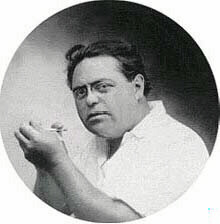
Jacques Futurelle
The Thinking Machine is ranked among the top crime and detective stories. I’m sure you can infer that Van Dusen uses logic in solving crimes, but the way he does it is most clever and creative, a great illustration of how to use one’s mind. He “insists that nothing is impossible when the human mind is properly applied.” This is remarkably illustrated in Futurelle’s most famous story, The Problem of Cell 13, which was also made into a TV episode for Kraft Mystery Theater.
As an aside, Futurelle died: “Returning from Europe aboard the RMS Titanic, Futrelle, a first-class passenger, refused to board a lifeboat, insisting his wife board instead, to the point of forcing her in. His wife remembered the last she saw of him: he was smoking a cigarette on deck with John Jacob Astor IV. Futrelle perished in the Atlantic, and his body was never found.[2][3]”
I, Robot might not be as obvious an example of logic, except that I got my first clear idea of logic from it. The premise of this series of stories is: the android-like robots are ruled by three laws of robotics. Each story in the series makes a mystery of the question: will the robots inevitably follow these three laws?
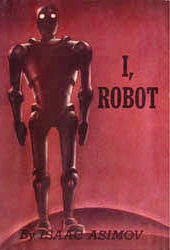
First Law – A robot may not injure a human being or, through inaction, allow a human being to come to harm.
Second Law – A robot must obey the orders given it by human beings except where such orders would conflict with the First Law.
Third Law – A robot must protect its own existence as long as such protection does not conflict with the First or Second Laws.[1]
Each story in the book is a riveting exploration of whether the robots will violate the laws—or not, in highly clever plot resolutions.
For an introduction to philosophy itself, Is Your Bed Still There When You Close The Door? by Jane Healey can beautifully generate a lot of great conversation. It also has reading recommendations in it.
Finally, this isn’t a children’s book but you might want to take a look at it: The Life-Smart Kid; it’s about teaching good reasoning, especially for practical situations. Thanks to Mark Berger for this recommendation years ago.
I hope you’ve found this accounting worthwhile—If you, dear reader, have suggestions or comments, please post them here! I’d like to learn from you.


There are no comments